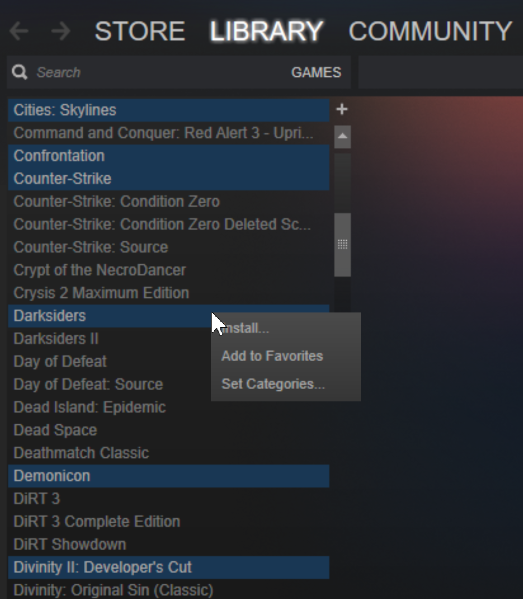

Microsoft Studios announced Zoo Tycoon earlier this year during the Electronic Entertainment Expo, leaving both animal fans and nostalgic gamers eagerly awaiting a rush of digital animals for their consoles. Developer Frontier Developments has pawed around in the animal business before, crafting furry critters in Kinectimals and even creating a Rollercoaster Tycoon port for the original Xbox. While Zoo Tycoon is chock full of adorable moments, it isn’t without its own flaws – this isn’t the kind of intricate management game Tycoon series fans will expect.
Zoo Tycoon places players into a friendly world, where unlike the original game of the same title, animals can never escape their exhibits. An emphasis on fun interactions, friendly animals and less managerial requirements seems to be the end result of a title simplified for a younger audience. This isn’t a bad thing, but gamers expecting the same kind of title as the original Zoo Tycoon should keep an open mind.
The game will provide players with three types of gameplay: free-form, campaign and challenge. In both the challenge and campaign modes, gamers are given a set number of tasks they must complete within a relatively small time frame. While it provides some challenge to the game, it also takes away the ability to properly enjoy the animals themselves. The sheer abundance of researching requirements is also perplexing, as gamers are forced to research every item on the menu – some will take 20 seconds and some will take two minutes – but the time isn’t listed until you agree to pay for the research. It’s then freeform mode where the game shines, without the pesky limitations of both research and finances. Since players aren’t rushed to complete objectives to a ticking clock, they’ll have time to enjoy the exhibits they’ve created, play with animals and grow an attachment to the animals they breed and purchase.
The largest downfall of Zoo Tycoon lies within its lack of variety and over-emphasis on simplicity. Whilst there are 8 main exhibition species and 15 mini-exhibition species – most with their own variety of subspecies – the animals don’t ultimately have many animations to cycle through. Lemurs become less entertaining when they do the same activities over and over, which may cause players to lose their infatuation with the adorably cute roster once they’ve committed several hours of time to the game. There are only a few types of enhancements players can add to each exhibit, and most of them are only for 1 to 3 types of animals – meaning most exhibits, regardless of which park they’re in, end up looking the same as any other exhibit. Players also lose the ability to control path placement, and while the game usually does a good job of this, sometimes it leaves a lot of room for improvement.
While the exhibits might not dazzle most gamers, the intricate details poured into the animals themselves certainly will. The huge amount of detail crammed into the textures make each animal really come to life, and one time of spraying a rhinoceros with a hose is enough to see that the team clearly spent a lot of time working on the water textures. Children and animal lovers will be in awe at the sheer level of detail, and playing it on the Xbox One will really drive the point home.
There are three Kinect-based interactions for exhibit animals, though each is very limited. For instance, big cats and chimpanzees can interact with the player through a sensory screen, and Kinect does a fantastic job recognizing facial expressions, proving itself very capable of telling when a mouth is open or even when someone blinks. The player can see their own reflection against the in-game glass, which adds a nice touch as the animals react to your facial expressions. The other two activities rely on hand gestures more than facial expressions, and while the actions that play out will make animal enthusiasts squeal, the flaws of the gesture recognition is sure to frustrate or confuse users – especially if young ones are involved.
The game supports up to four players at once regardless of game mode, allowing friends to all jump in together and work on the same zoo. It’s fun to see interactions happen from a different perspective, and even when they’re not playing in the same zoo players are able to donate animals to each other. These animals can be added to any zoo in any game mode, which means zoos strapped for cash can really benefit from a friend playing in freeform mode with unlimited funding for expensive animals. Refilling water and food supplies (and, of course, cleaning poop) is made much easier with friends, and proves to be an enjoyable experience.
One of the biggest disappointments on the Xbox One edition is the fact that the game has a built-in limit on how many animals and exhibits can be placed. While Zoo Tycoon gives the player a big map with plenty of space, players will typically be forced to stop building when it’s around a quarter full due to a message saying ‘there’s no more room for exhibits’. As a launch title for the system, it was surprising to see such a game-stopping limitation put in place. Animals and items can be removed to make more room, but the game really should allow for more objects to be put in. Editing objects is hard enough with the poorly configured menu interface, which forces players to go back and forth and take far too many steps to perform each task they’re given.
Zoo Tycoon is a great casual game with plenty of enjoyable animal moments, but the experience is marred by an over-emphasis on simplicity and a terrible menu interface. The graphics are certainly a strong point on the Xbox One, but other limitations take away from what truly could have been a next-generation experience. Despite this, it’s an enjoyable ride for those looking to relax and have a little fun, and most gamers will find it hard to say no to the adorable roster of animals if given the chance to see them.
Zoo Tycoon is available now for both Xbox 360 and Xbox One.
–
Follow John Jacques on Twitter @Makelevi.




 Windows 10 Comes With Candy Crush: Here's How to Remove It
Windows 10 Comes With Candy Crush: Here's How to Remove It Can You Use Your Controller With A Game That Does Not Recognize It?
Can You Use Your Controller With A Game That Does Not Recognize It? It's Easy to Batch Install and Uninstall Steam Games
It's Easy to Batch Install and Uninstall Steam Games The Witcher 3: Hearts of Stone Diagrams, Viper Armor locations
The Witcher 3: Hearts of Stone Diagrams, Viper Armor locations Feist (PC) walkthrough
Feist (PC) walkthrough